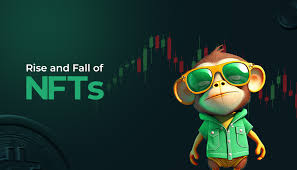The Rise and Fall of NFTs

NFTs, or Non-Fungible Tokens, burst onto the digital scene a few years ago as a revolutionary way to own and trade digital art, music, and collectibles. Promising to transform ownership in the virtual world, NFTs attracted huge attention from artists, collectors, and investors alike. Suddenly, digital assets were selling for millions, making headlines and sparking a frenzy of creativity and speculation.
At their peak, NFTs symbolized the perfect blend of blockchain technology and the booming digital economy. Artists found new ways to monetize their work directly, bypassing traditional galleries and middlemen. Collectors reveled in owning unique digital items verified on the blockchain, from pixelated art to iconic moments in sports. The market exploded with new platforms and auctions, and celebrities jumped on board, further fueling the hype.
However, beneath the surface of this digital gold rush were growing concerns. Questions about the environmental impact of blockchain technology, rampant speculation, and scams began to emerge. Many early buyers saw massive profits, but just as quickly, prices started to fluctuate wildly. The excitement began to wane as skeptics questioned the true value and sustainability of NFTs.
As the market cooled, the bubble burst for many NFT projects. Prices plummeted, and some platforms struggled to maintain user interest. The hype-driven frenzy gave way to a more cautious, realistic approach to digital ownership. While some high-profile NFTs still command impressive sums, the broad market has contracted significantly from its dizzying heights.
Despite the fall, NFTs have left a lasting impact. They introduced millions to blockchain and digital ownership concepts that continue to evolve. Today, NFTs are finding new use cases beyond art—such as gaming, virtual real estate, and even ticketing—showing promise as part of the broader Web3 revolution.
The rise and fall of NFTs serve as a cautionary tale about hype cycles and the challenges of new technology adoption. Early exuberance, driven by speculation, eventually gave way to the need for utility, transparency, and sustainability. This maturation process is typical in tech trends, where the initial boom is followed by correction and consolidation.
Looking ahead, NFTs are unlikely to disappear but instead will evolve, integrating with augmented reality, metaverse platforms, and decentralized finance. For creators and consumers willing to navigate this new frontier thoughtfully, NFTs still offer exciting opportunities—just with lessons learned from their rollercoaster journey.